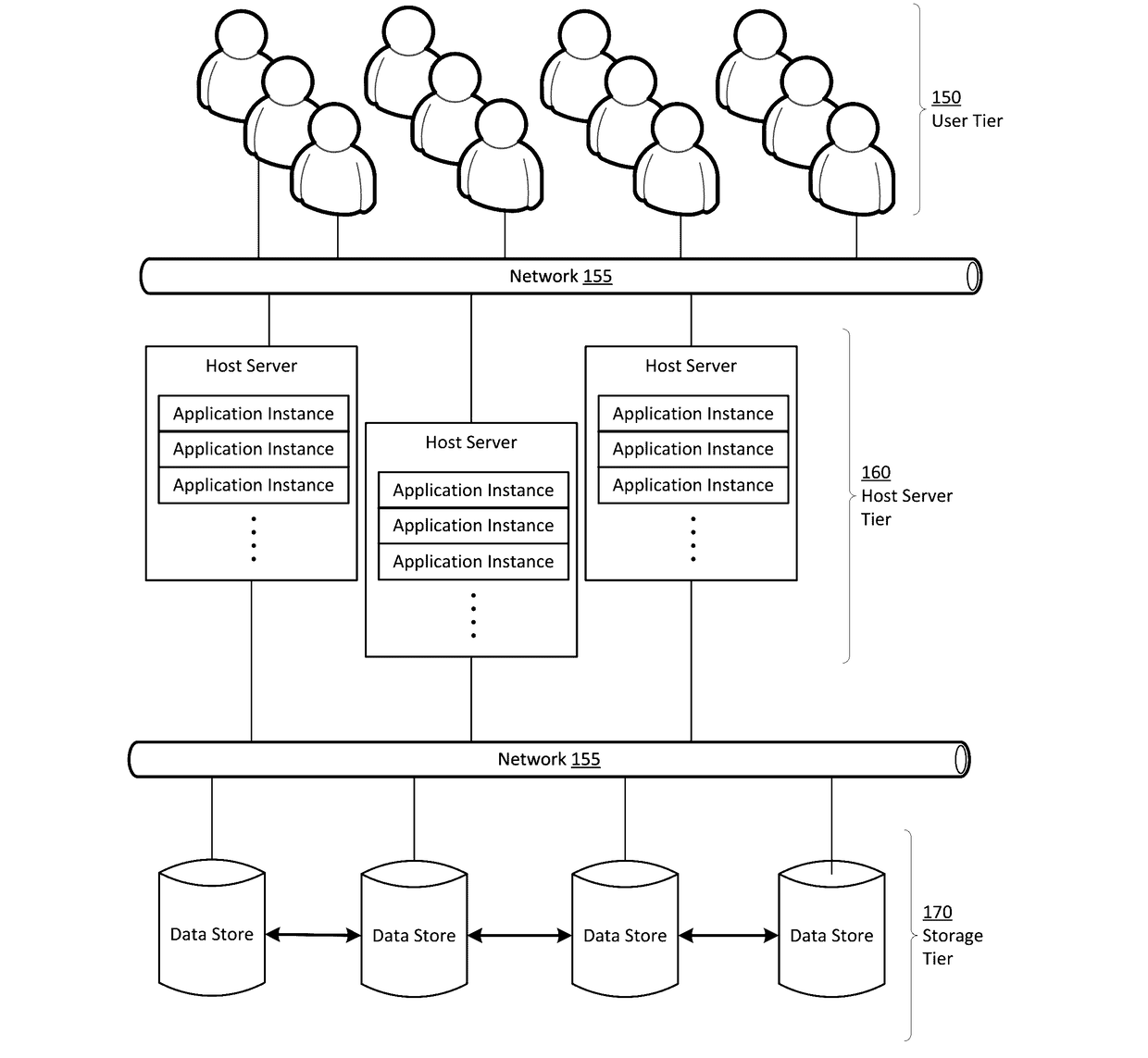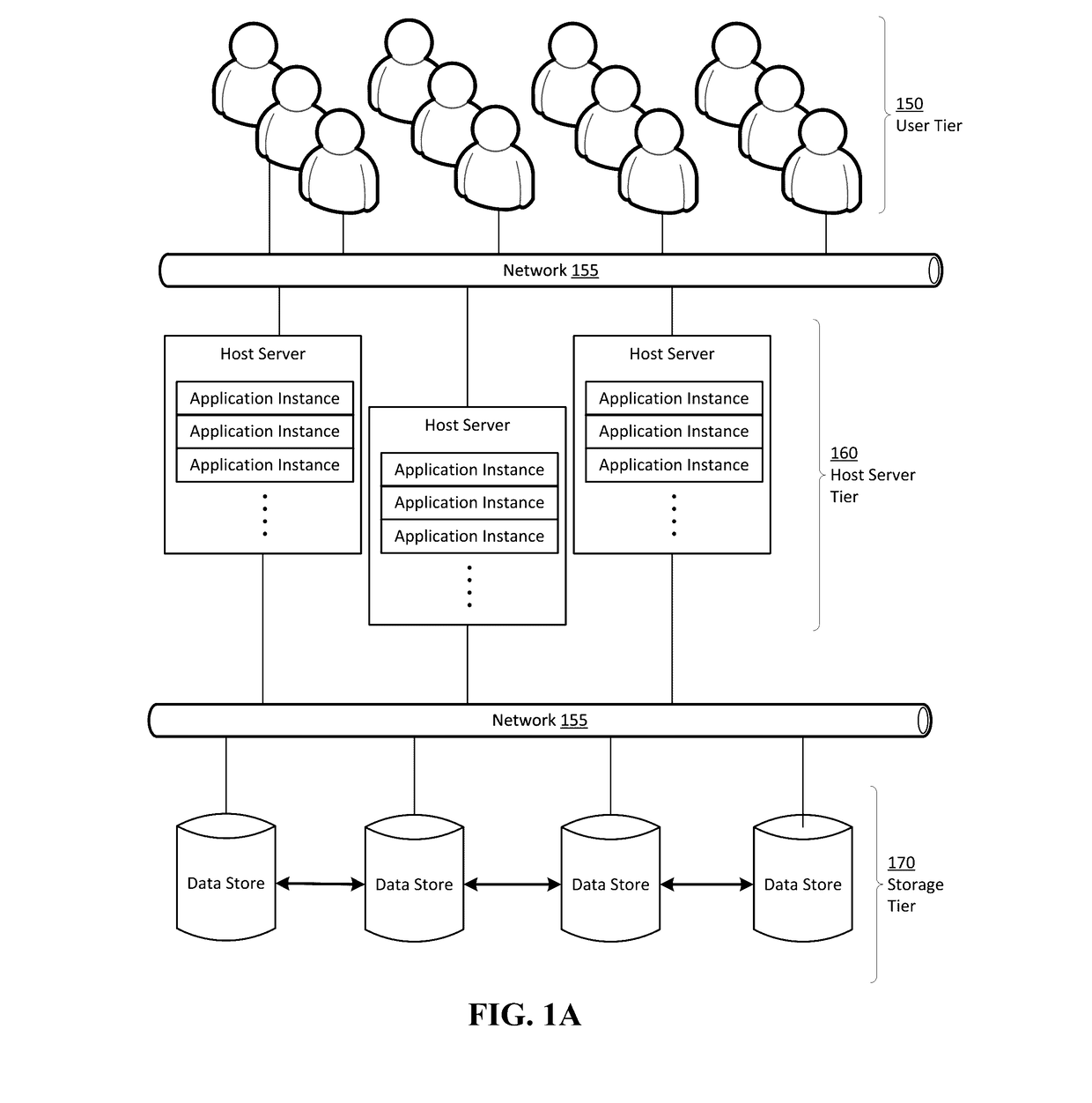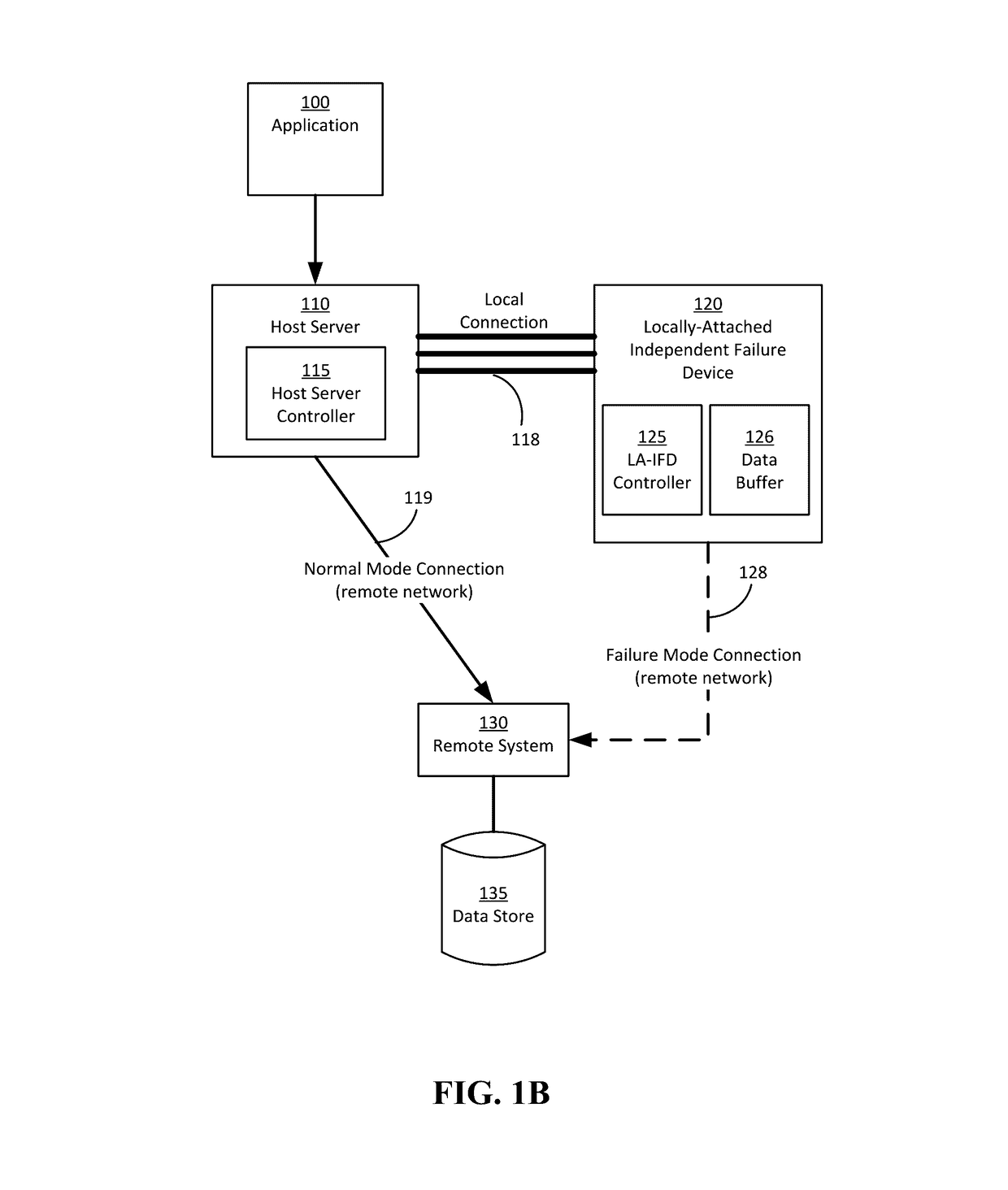Techniques and systems for local independent failure domains
a technology of failure domain and failure system, applied in the direction of redundant hardware error correction, input/output to record carrier, instruments, etc., can solve problems such as problems, achieve the effect of improving blocking performance, maintaining expected scalability and data integrity levels, and improving both apparent performan
- Summary
- Abstract
- Description
- Claims
- Application Information
AI Technical Summary
Benefits of technology
Problems solved by technology
Method used
Image
Examples
Embodiment Construction
[0017]Techniques and systems are described for enabling local independent failure domains in a host server or datacenter environment. FIG. 1A shows a simple example of components in a scalable datacenter model. In FIG. 1A, users in the user tier 150 utilize applications over a network 155 through their devices. Each may generate an application instance on a host server in the host server tier 160. The number of host servers in the host server tier 160, as well as the number of application instances on each server, may expand dynamically in response to the number of users actively using the application in the user tier 150. In order to accommodate this dynamic scalability of host servers in the host server tier 160, the host servers may connect over the network 155 to a set of distributed data stores in a storage tier 170. The data stores may be replicated to reduce loading on any particular data store as the number of host servers grow. Like the host servers, the number of data stor...
PUM
 Login to View More
Login to View More Abstract
Description
Claims
Application Information
 Login to View More
Login to View More - R&D
- Intellectual Property
- Life Sciences
- Materials
- Tech Scout
- Unparalleled Data Quality
- Higher Quality Content
- 60% Fewer Hallucinations
Browse by: Latest US Patents, China's latest patents, Technical Efficacy Thesaurus, Application Domain, Technology Topic, Popular Technical Reports.
© 2025 PatSnap. All rights reserved.Legal|Privacy policy|Modern Slavery Act Transparency Statement|Sitemap|About US| Contact US: help@patsnap.com



